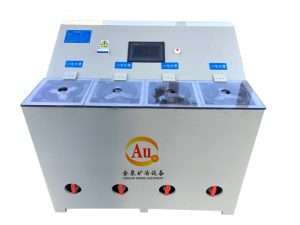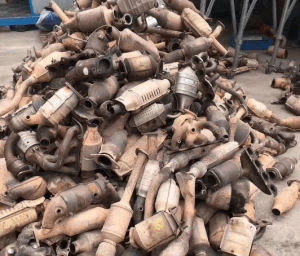Call us now:
Platinum, palladium, and rhodium are three precious metals that are generally used in the manufacture of high-end electronic products, chemical catalysts, jewelry and other fields. The following are the general steps of platinum palladium rhodium refining:
Preliminary Handling: Raw material may contain other impurities and metals. Raw materials are initially treated by smelting or other means to remove impurities and other metals.
Dissolution: put the primary treated material into a solvent, such as aqua regia or nitric acid, to dissolve platinum, palladium and rhodium.
Separation: Use special chemical agents or methods to separate platinum, palladium and rhodium.
Refining: Platinum, palladium, and rhodium are deposited into powders by high temperature and high pressure methods in a hydrogen atmosphere for further purification.
Adjustment: The refined platinum palladium rhodium powder may need to be further adjusted into the desired shape and size, such as flakes, granules, etc.
Testing: Quality testing is carried out on the refined platinum, palladium and rhodium to ensure that the required purity and quality standards are met.
It should be noted that platinum, palladium, and rhodium are very precious precious metals, and the refining process requires strict safety measures to ensure the safety of personnel and the environment.
In addition, the specific methods and steps of refining platinum, palladium and rhodium will vary due to different raw materials, purity requirements, product forms and other factors. Here are a few common refining methods:
Chemical reduction method: use chemical reducing agent to separate platinum, palladium and rhodium from other metals. This method has higher requirements on raw materials, and needs higher purity and relatively higher content of platinum, palladium and rhodium to be effectively carried out.
Solvent extraction method: use organic solvents to separate platinum, palladium and rhodium from raw materials, and the purity requirements are relatively low. The method can be carried out over a wide temperature range and is also suitable for many different platinum palladium rhodium contents.
Powder metallurgy method: mix platinum, palladium and rhodium with other metal powders, carry out reduction reaction at high temperature, reduce platinum, palladium and rhodium into powder, and then further refine into the desired form by mechanical processing and other methods. This method is suitable for high-purity and large-scale production of platinum, palladium and rhodium.
In conclusion, platinum palladium rhodium refining is a complex and delicate process that requires high-level technology and equipment to ensure product quality and safety.

